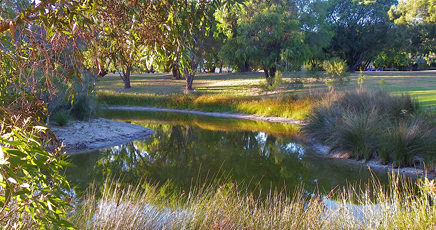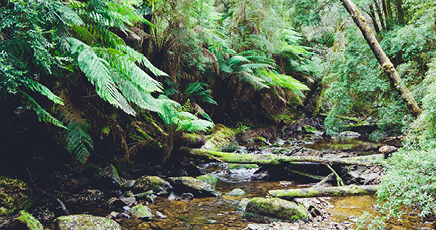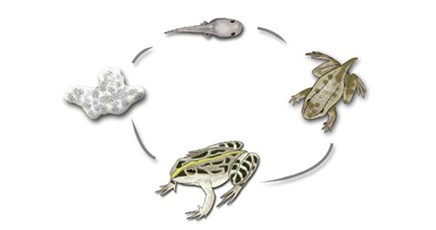STORY
Every time Suyin and Tom explored the park next to Suyin’s house, they found themselves hearing some unusual sounds. As the park backs onto a small creek, Suyin is convinced that the sounds are frogs singing to them. Tom was not sure, do frogs live in local parks? Suyin decided that she was going to prove to her friend that there is a colony of frogs in the park. She would ask her grandfather all about frogs during their weekly phone call. He would help direct her to books and online resources that she can read to learn more about frogs and their habitat.

The lack of suitable habitat is a real threat to frogs across Australia. With some research and careful preparation, you can take action and create a frog-friendly habitat on your property, at school or at your local community garden. Restoration of habitats increases the land’s ability to support frog populations and helps connect frog communities. Frogs are a valuable part of ecosystems, as both predator and prey species.
This learning activity is the first part of a sequence of 3 individual learning activities focused on creating a frog-friendly habitat. The order of these learning activities are: research, design, and construction.
For children to:
- understand the role frogs play in your local ecosystem, e.g. food web
- look at ways they can help restore or create frog-friendly habitat
- appreciate the role of frogs as environmental indicators
- undertake research on the needs of local frog species, investigate their aquatic breeding habitat and their foraging habitat
- value frogs as extraordinary animals who have rights to exist in the land and water we share with them.
While this activity can be undertaken any time of year, undertaking this project during times of predictable rainfall may be beneficial. Natural rainfall will fill the pond and enable young learners to observe where the water pools naturally in your area.
Introduction
Most young learners will come with some prior knowledge of frogs. Upon completion of this learning activity, they will have developed a basic, moderate or complex understanding of a local frog’s specific survival needs, depending on their stage of learning. The research and planning phases are essential to creating a suitable frog habitat.
*Time allocation will be dependent on site selection and travel time. Additional time may be spent in consultation with your local Landcare group, council, or indigenous plant nursery.
Checklist
Instructions
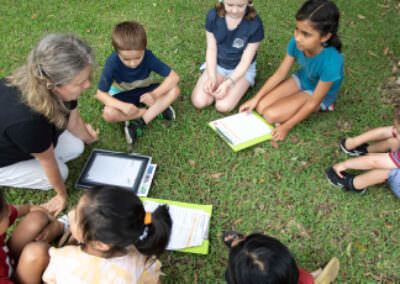
STEP 1
Tuning in
Before we design our frog-friendly habitat, we first need to find out: what do we think we know about frogs?
Discuss and brainstorm in groups so the information is visible for all to see, e.g. poster paper, whiteboard, devices or interactive whiteboard.
Do we need to fact-check any of these statements? Get the children to verify any statements that they may not be certain of by gathering supporting information.
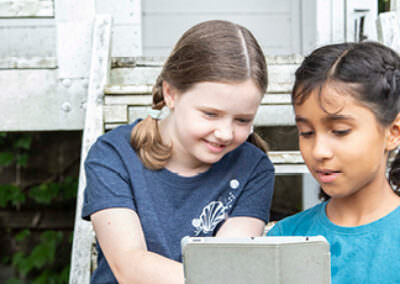
STEP 2
Delving deeper
Are there gaps in our learning?
What do we need to know about frogs that is essential to informing our frog habitat design and construction so it is suitable for our local frogs?
What questions do we still have? Discuss and brainstorm in groups.
Undertake further research.
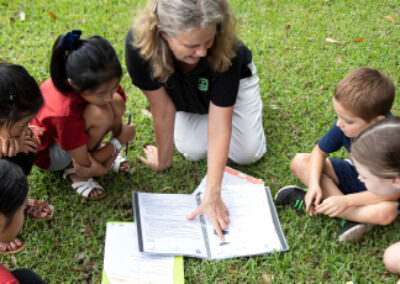
STEP 3
Honing in
It is essential to understand the specific needs of frogs local to your area. Use a digital or print frog guide to identify frogs local to your area.
Find out the frogs: diet, distribution and habitat, lifecycle, call and distinguishing characteristics.
Are there experts who can help with your investigations? Connect with your local Landcare group, environmental community group, local council ranger or Indigenous Elders.
Use the activity sheet to help children record their learnings.
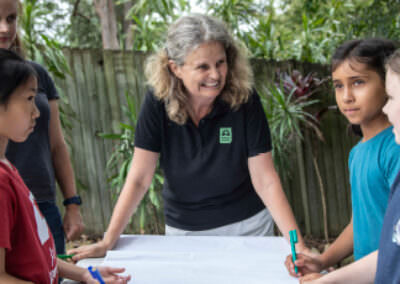
STEP 4
Processing and applying learning
How are we going to use this prior and new found knowledge to create a suitable habitat for local frog(s) species?
Discuss the next steps, this is the design phase.
Extension Activity
Read the Dreaming story of Tiddalik the frog (this can be found in print or online). This story has important messages about the impact of our choices. How might this be relevant today with respect to humans and the environment?
Use the Australian Museum’s FrogID mobile app, to discover which frogs live around you, and can also be used contribute to the Australian database of frogs as citizen scientists.
Curriculum and Framework Links
SCIENCE
Year 2: ACSSU031, ACSHE035,
Year 3: ACSSU044, ACSHE051
Year 4: ACSHE062, ACSSU073, ACSSU075
Year 5: ACSSU043, ACSHE083
Year 6: ACSSU094, ACSHE100
Year 7: ACSSU112, ACSHE120
Year 8: ACSHE135
Year 9: ACSSU176
GEOGRAPHY
Year 9: ACHGK061
CRITICAL AND CREATIVE THINKING:
Generating ideas, possibilities and actions
PERSONAL AND SOCIAL CAPABILITY:
Social awareness
CROSS CURRICULUM PRIORITY
Aboriginal and Torres Straight Islanders Histories and Cultures
Sustainability
MY TIME, OUR PLACE: FRAMEWORK FOR SCHOOL AGE CARE
Outcome 2 and 4
Reference List
ONLINE RESOURCES
Use the Amphibian Research Centre’s Frogs of Australia to select your location and discover detailed information on frogs found in your region.
The Australian Museum has a wealth of resources. The 42 Frog fact sheets give fast facts, distribution map, as well as information on behaviours and adaptations. The FrogID project is the Australian Museum’s national citizen science project helping us learn more about what is happening to Australia’s frogs. The FrogID app is a free field guide to Australia’s 242 species of frogs and the filtered search tool provides detailed information on frogs in a variety of habitats and regions. FrogID is also a monitoring tool that Junior Landcarers can use to help scientists count Australia’s frogs. By recording frog calls through the free FrogID app, Junior Landcarers can participate in valuable frog research and understanding.
Australian Geographic’s illustrations and information provide snapshots on a range of 20 special Australian frogs.
WATCH
This 4 minute video All about Frogs from ABC Education focuses on the features, habits and life cycles of Australian frogs.
Learn more about Saving the Australian Corroboree Frog – one of Australia’s most endangered frogs in this 5 minute video from Australian Geographic.
Discover the work to conserve the Baw Baw Frog from this 3 minute video from Zoos Victoria.
IMAGE ATTRIBUTION
Feature image:
Litoria bella, IronRange NP QLD by Dr Jodi Rowley, Lead Scientist of FrogID
Other images:
Nelson Falls Nature Trail, West Coast TAS, Australia. Photo by Kate Stone Matheson on Unsplash
Dr Olga Barron collects a water sample from the Wungong River, Brookdale, Perth, WA. Photographer: David McClenaghan
Image of frog skin. Photographer: Livestock Industries
Frog diagram from Australian Museum – FrogID
Just for Kids
Check out our fun activity Frog dot-to-dot
We value your feedback
When you have finished this learning activity, please tell us what you think with our survey.
Your feedback will help Landcare Australia improve the activities in the Junior Landcare Learning Centre.
Why not try one of our other Junior Landcare learning activities?
Creating a butterfly garden
Biodiversity
Love Letters to the Land
Biodiversity|First Nations Perspectives|Food Production|Waste Management
Creating a sensory garden
Biodiversity
Understanding weeds: life cycle
Biodiversity
